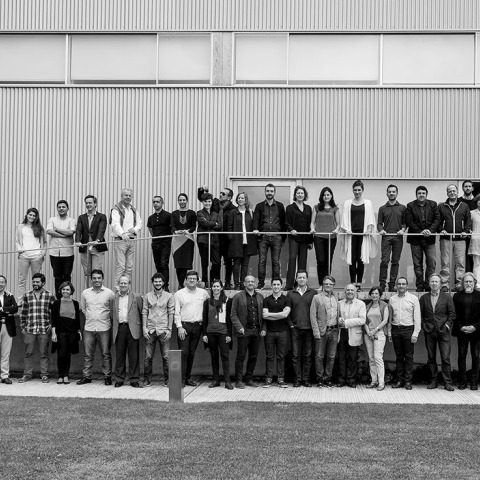After the failure to keep growing with the same intensity, the process of reflection on how to act on the built seemed unavoidable. The Congress, International Campus of Ulzama, was organized by the Architecture and Society Foundation, was led by José Manuel Pozo and articulated by the architect Francisco Mangado, as master of ceremonies and architect of the equestrian center.
For three days, different architects from the United States, Switzerland, Germany, Spain, Italy, Portugal, Greece, Argentina and Chile, participated in this intense international congress of architecture where a debate was generates, one that was refreshing, intense, controversial and with found positions.
After the different presentations of "junior" architects and the more extensive of the "senior" architects a series of debates occurred, delving into the issue raised by the Congress. After a first display of positions, where the topic of the crisis was a latent argument, the various interlocutors discussed about the need to continue designing new spaces or to reuse, and to what extent should we act on the existing. In this debate, centered on the idea of space, I proposed to turn 180 degrees to suggest the need to not keep thinking about the creation or construction of spaces for being more important the creation of places in the ontological sense proposed by Yi Fu Tuan. Architecture must be focused on its relationship with individuals or, as Sean Harrington said, more participatory with citizens or, as Anna Bach commented, closer to the interests of the people.
The debate in the next two days followed a more orthodox path centered on the idea of space. The crisis, this time environmental, became the engine of the discussions. The discussion focused on the processes of population decrease, which countries like Germany are already suffering, with important decreasing in the years to come. Wilfried Wang raised data of unsustainable growth in the Western world, focusing on the German case, with a positioning clearly focused on his concern for the environmental degradation process, raised the question of not continuing to create architecture as something essentially needed in the architecture that is to come. Against this position, the discussion entered the debate of what to preserve and how to preserve, where Inès Lamunière or Bernard Khoury raised the question of which are the parameters to preserve? What should you keep? And who should decide what to keep?
From those who suggested a process of greater intervention on the existing and less protection on those architectures, others remarked on the need to take into account that not all maintenance parameters must be only economic, (as has been raised so systematically over recent years), it is necessary and equally important to make sure that cultural parameters, of identity and the memory of citizens are also taken into account.
Given this approach others were presented doubting the memory of citizens, arguing its fragility with a speech that Sofia Krimizi did not hesitate to call cynical.
The diversity of approaches had as its best move to focus the debate on the origin of our need to build, and as the main mistake to not realize that the different scales of action, especially in cities, demand more alternative answers; that it is not the same the interventions in small and frozen as in cities going through an intense and accelerated growth. This growth should think about sustainability and resource consumption that architecture is , as one of the main activities on our planet, in the global development.
The main result of the Congress was a debate that we all participants have brought to our workplaces, with a load of questions about our own certainties and the confirmation of a similar situation in the others, with a clearer shared understanding and more uncertain too, as well as the experience of meeting people who still love the architecture, which is always the best part. It was an encounter that is still interesting, necessary and refreshing as the first day.
The Campus has had Llàtzer Moix, as narrator, and with the participation of doctoral students as Ariadna Perich, Kai Nikkolaus Grüne, Antonio Cidoncha, María Luisa de Miguel, Kai Nikkolaus Grüne, Alberto Pireddu y Jon Polo, along with young architects (junior) Eugeni y Anna Bach, Ricardo Carvalho, Lorena del Río, Juanma Filice, Seán Harrington, Sofia Krimizi y Ariadna Perich, the architects (senior) amilo Botticini, Johan Celsing, Pedro Falcao, Bernard Khoury, Inès Lamunière, Andrea L. Simitch, Wilfried Wang y Val K. Warke and guest architects Bak Gordon, José Juan Barba, Pola Mora, Gerardo García-Ventosa, have presented their work and discussed for three long days.








































